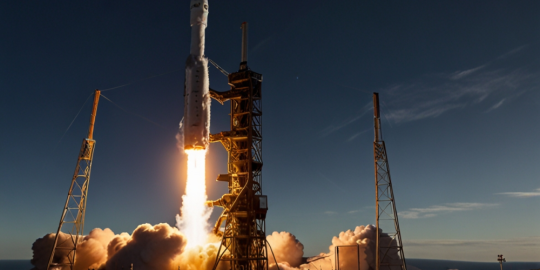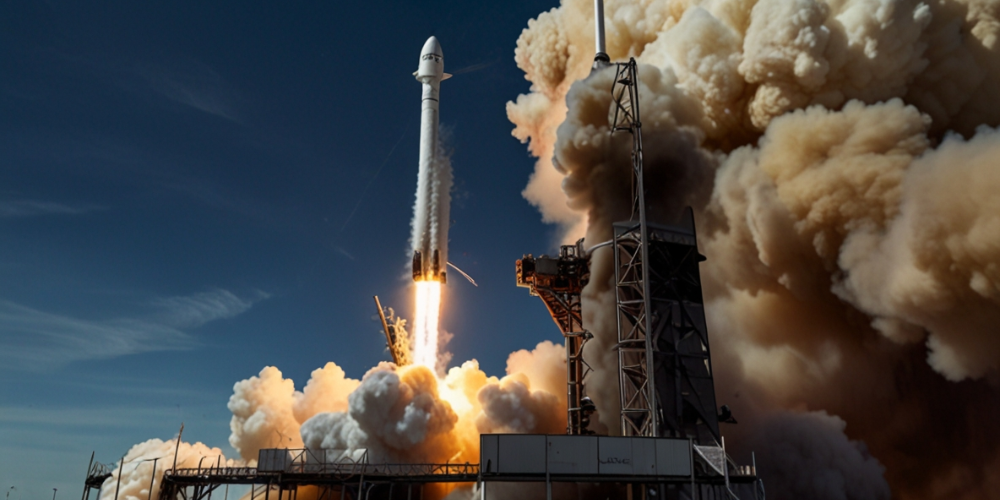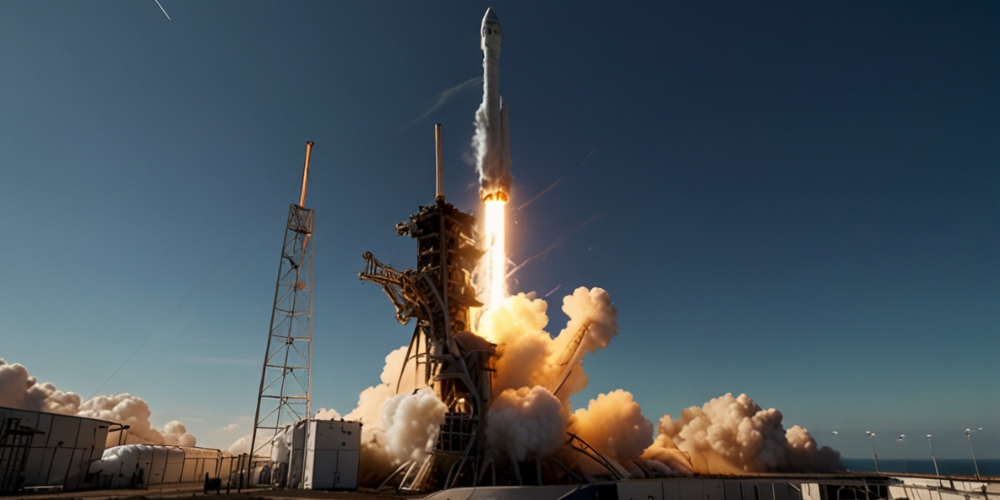
In an unusual and concerning turn of events, SpaceX's Falcon 9 rocket experienced significant issues during its latest Starlink mission. Despite successful earlier stages, the mission ended with the second stage failing to meet its objectives, potentially jeopardizing the deployed satellites. This update sheds light on the details surrounding this unexpected development.
Unexpected Setback for Falcon 9
The Falcon 9 rocket was launched from Vandenberg Space Force Base in California, carrying a payload of 20 Starlink satellites aimed at improving global internet coverage. Every launch is critical with the increasing reliance on satellite constellations for communication, GPS services, weather monitoring, and more. This particular launch included 13 direct-to-cell satellites designed to enhance connectivity, allowing mobile users to link directly to the Starlink network.
Initial Success Followed by Failure
The launch initially proceeded as planned, with the Falcon 9 rocket lifting off and the first stage successfully landing on SpaceX’s drone ship. This marked SpaceX’s 70th mission for the year 2024. However, the mission’s latter half took an unexpected turn during the crucial phase involving the second-stage Merlin vacuum engine, which was responsible for raising the satellite's altitude. Approximately eight minutes after launch, an abnormal buildup of ice was observed in the second stage, signaling the onset of complications.
Elon Musk’s Revelation and Immediate Actions

A few hours after the live stream of the launch had ended, Elon Musk revealed in a statement that the second stage had suffered a Rapid Unscheduled Disassembly (RUD), a term describing an explosive event in aerospace parlance. Musk highlighted that the Starlink satellites were deployed, but their lower-than-planned orbit was a major concern. Typically, SpaceX deploys these satellites into a "parking orbit," where they conduct system checks before propelling themselves to their operational positions.
Despite these efforts, Musk noted that reaching the intended orbit from the compromised state was improbable, implying that the satellites might not fulfill their mission as expected. At this juncture, SpaceX was actively examining data to better understand the failure, especially why the second-stage engine did not complete its required burn, leading to an incomplete deployment process.
Technical Challenges in Space Operations
Launching and maneuvering rockets in space involves a gamut of technical challenges distinct from terrestrial operations. The second-stage engine must ignite in the vacuum of space, requiring extremely stable fuel conditions and precise temperature management. SpaceX disclosed that it had managed to establish contact with five of the satellites and was attempting to correct their orbits using ion thrusters. These thrusters, albeit efficient, need to counteract atmospheric drag, which is a tough task at lower altitudes near Earth’s atmosphere.
Orbital Mechanics and Further Complications

Once the satellites are in space, they must reach their operational orbit by overcoming several hurdles. Orbital mechanics dictates that maintaining a stable orbit requires precise control over speed and altitude. The closer a satellite is to Earth, the stronger the atmospheric drag, which burns valuable fuel needed for orbital corrections. This is why deploying satellites closer to their operational threshold is critical; any anomalies can drastically affect their lifespan and functional capabilities. The Merlin engine’s failure thus posed a substantial drawback, not just for the current mission but potentially affecting SpaceX’s deployment schedule and overall Starlink project timelines.
Future Implications and SpaceX’s Response
SpaceX’s rapid response to any failure is a testament to its commitment to transparency and constant innovation. With Musk at the helm, SpaceX will certainly carry out an extensive inquiry to determine the root cause of the rapid unplanned disassembly (RUD) and take necessary actions to rectify the issues. This level of scrutiny and a rigorous feedback process is crucial for any aerospace company aspiring to reduce launch costs and improve reliability.
Looking Forward: Space Missions and Innovations
Looking forward, the landscape of space exploration is evolving with increased commercial involvement. Companies like SpaceX are spearheading this change, but such endeavors are fraught with risks. Each setback, while inconvenient, offers a learning opportunity to refine technology and operational protocols. Further advancements in rocket design, fuel management, and automated systems are anticipated to mitigate such unexpected events in future missions.

SpaceX’s rigorous testing, revisiting engineering designs, and fostering a culture of innovation are keys to tackling these challenges head-on. The knowledge gained from this and similar incidents will be invaluable for SpaceX and the broader aerospace industry.
Despite the recent failure, SpaceX’s ambitious goals, including the development of its Starship rocket and Mars colonization plans, continue to inspire. While the recent mission certainly drew attention, the broader vision encompasses repeated testing, learning, and achieving milestones that push the boundaries of human space exploration.
A Glimpse Into the Future of Satellites
The ongoing augmentation of satellite constellations like Starlink signals a new era in global connectivity. The performance and longevity of these satellites are crucial for maintaining consistent and reliable service. This incident underscores the importance of robust launch systems and redundancy in satellite technology to ensure success despite individual mission setbacks. Moreover, it accentuates the collaborative spirit in aerospace, where data-sharing and joint efforts often drive quicker resolutions and advancements.
In summary, the recent incident with SpaceX’s Falcon 9 exemplifies space missions' complexities and unpredictable nature. Moving forward, rigorous analyses and enhanced engineering practices will be fundamental in bolstering mission success rates. SpaceX’s journey illustrates the concerted efforts required in space exploration and the immense potential it holds for future technological breakthroughs and interstellar endeavors.